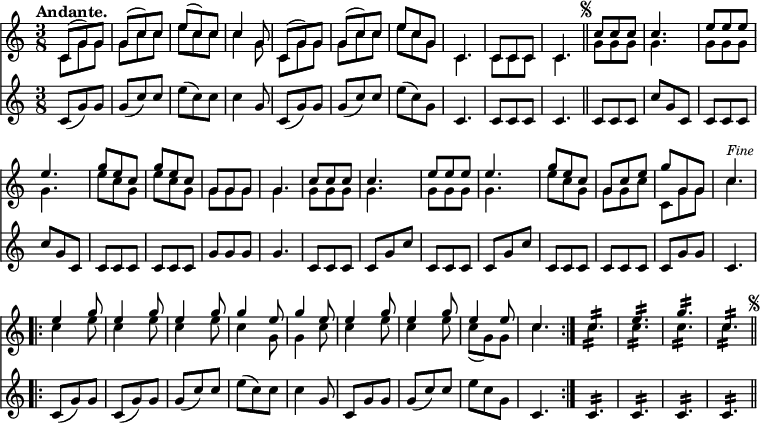The history of army signals in France is brought to a close by the restoration last year of the drum to its former position, the ill-advised attempt to abolish it from the army having met with universal disfavour. The French signals are much too numerous for quotation in these pages. They are superior to the English in the three essentials of rhythm, melody and simplicity, but in all three respects are inferior to the German. Perhaps the best French signal is 'La Retraite,' played as arranged for three trumpets.

Returning to the English signals, after the Rebellion and during the great continental wars of the 18th century, the English army underwent many changes, and was much influenced by the association of foreign allies. The fife had fallen into disuse, but was reintroduced by the Duke of Cumberland in 1747. Fifes were first used by the Royal Artillery, who were instructed in playing them by a Hanoverian named Ulrich. They were afterwards adopted by the Guards and the 19th, and soon came into general use. Grose (Military Antiquities) alleges that the trumpet was first adopted in 1759 by the Dragoons instead of the hautbois; but this is evidently an error, as by an order of George II., dated July 25, 1743, 'all Horse and Dragoon Grand Guards are to sound trumpets, and beat drums, at marching from the Parade and Relieving.' On the formation of light infantry regiments, drums were at first used by them, in common with the rest of the army, but about 1792 they adopted the bugle for signalling purposes. 'Bugle Horns' are first mentioned in the 'Rules and Regulations for the Formations, Field-Exercise, and Movements, of His Majesty's Forces,' issued June 1, 1792. In December 1798 the first authorised collection of trumpet-bugle Sounds was issued, and by regulations dated November 1804 these Sounds were adopted by every regiment and corps of cavalry in the service. The bugle was afterwards (and still is) used by the Royal Artillery, and about the time of the Crimean campaign was used by the cavalry in the field, although the trumpet is still used in camp and quarters. The use of the drum[1] for signalling is almost extinct in our army, but combined with the fife (now called the flute), it is used for marching purposes. Like many other musical matters connected with the British army, the state of the different bugle and trumpet sounds calls for considerable reform. The instruments used are trumpets in E♭ and bugles in B♭, and though the former are said to be specially used by the Horse Artillery and Cavalry, and the latter by the Royal Artillery and Infantry, there seems to be no settled custom in the service, but—as in the similar case of the different regimental marches—one branch of the service adopts the instrument of another branch whenever it is found convenient. There are two collections of Sounds published by authority for the use of the army—'Trumpet and Bugle Sounds for Mounted Services and Garrison Artillery, with Instructions for the Training of Trumpeters' (last edition 1879); and 'Infantry Bugle Sounds' (last edition 1877). The former of these works contains the Cavalry Regimental Calls, the Royal Artillery Regimental and Brigade Calls, Soundings for Camp and Quarters, Soundings for the Field, Field Calls for Royal Artillery when acting as infantry, and Instructions for Trumpeters. The sounds are formed by different combinations of the open notes of the bugle[2] and trumpet. Their scales are as follow:—
- ↑ Some of the Drum-beats will be found in vol. i. p. 466 of this Dictionary.
- ↑ See vol. i. p. 280.

